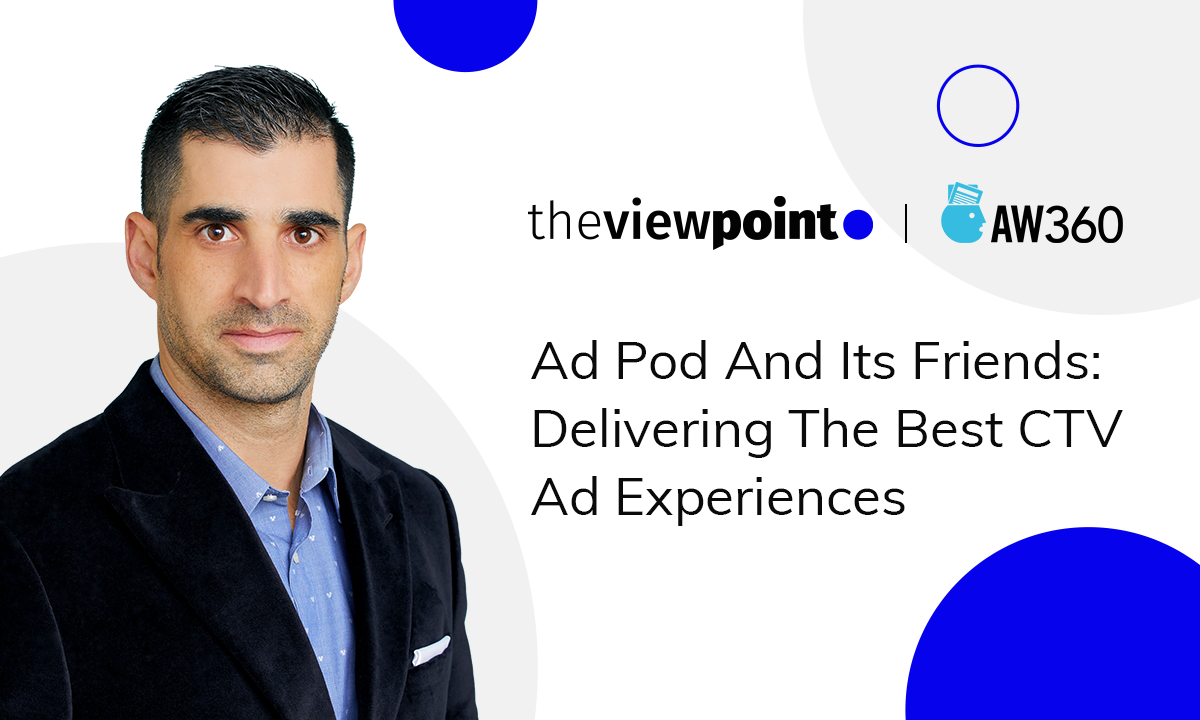
Ad Pod And its Friends: Delivering the Best CTV Ad Experiences
Aiming to stand out from the crowd and surpass consumers’ expectations, CTV advertisers have to be allied with publishers and very savvy at applying innovative advertising techniques, like frequency capping, competitive ad separation, and deduplication. Though still raising a lot of eyebrows, these tools have already become the next big thing in the advertising world. So, before diving deep into the details of ad pod management, let’s take a sneak peek behind the scenes of modern CTV play.
Stateless CTV Infrastructure
The skyrocketing growth of CTV and OTT in 2020 has paved a promising future for the development of the digital video industry. According to IAB, 60% of digital buyers plan to shift linear TV dollars to CTV this year in order to find even more lucrative ways of engaging with consumers by placing ads where consumers spend most of their time. Additionally, an increasing number of CTV platforms are following the examples of Pluto TV, Crackle, Vudu, Xumo, and Tubi, and opting for ad-supported video on demand (AVOD), which offers its viewers 24/7 entertainment as a trade-off for seeing ads. Despite seeming like a real bonanza, boosting advertising efficiency and developing a reliable conversion funnel, remains a tough job. And the main problem lies not in advertisers, publishers or viewers, it’s actually in the nature of the current CTV infrastructure.
The CTV infrastructure originates from the so-called Ad Tech 1.0, built around mobile and desktop, and based on the idea of ad units embedded in static pieces of content. This obviously has nothing to do with CTV, its dynamism, and the variety of apps people use every day. Yet, with Ad Tech 1.0’s inheritance in mind, it’s not surprising that CTV still struggles with the same ads being shown over and over again to bored viewers.
For advertisers, who buy inventory from various device makers, app owners, and media platforms, stateless infrastructure means that nothing stops their ads from being repeatedly displayed to the same viewers on numerous occasions. As a result, media buyers fritter away their budgets due to alienated and frustrated audiences as well as wasted impressions. Furthermore, this situation significantly impacts publishers’ yields because of the ineffective ad creatives distribution. In order to pursue a “stateful” model, CTV had to step away from costly and inconsiderate slot auctioning that comes from desktop and reinvent itself by adopting trustworthy linear TV practices, such as ad podding.
What’s in the Ad Pod?
Ad pods stand for a number of ads played one after another within a break, just like good old linear TV commercials. Ad pod management makes perfect sense for streaming content with long duration when the risk of failing to deliver a reasonably pleasant ad experience is much higher. It enables publishers to source multiple ads from one request, whereas for advertisers, it offers an opportunity to bid on a slot within a pod and get comprehensive data on other advertisers that may also be present there. Unlike stateless infrastructure, where each slot in a pod is being sold to many SSPs, without any consideration of the content of sequenced ads, “stateful” ad podding suppresses QPSs and costs on infrastructure as well as improves user rates and their overall ad experience. This is done mainly by the means of competitive ad separation, deduplication, and frequency capping.
Competitive ad separation prevents ads that belong to the same brand category from being displayed in one pod. Thus, it allows publishers to fill in an ad pod with ad creatives from distinct companies. For instance, competitive ad separation will guarantee a sequence of ads in the pod will not contain creatives of Audi adjacent to Ford, whichever media source these ads are coming from. By deploying competitive separation, advertisers can creatively position themselves in the market, whereas publishers can diversify their ad content and make it relevant to the audience.
Deduplication, which is also sometimes called deduping, hinders the same creatives being delivered multiple times within one ad pod or break. Given that in the CTV reality ad duration typically varies from 6 to 120 seconds, as per IAB, and bidding is happening in real-time, ad deduplication doesn’t seem particularly like a piece of cake. However, applying this technique ensures viewers don’t suffer from irritation caused by ad repetition. In other words, ads don’t contribute to building a negative image of advertised products, services, and brands as a whole.
Frequency capping is an ad targeting option that limits how many times users see a particular ad or advertiser in a given time frame. Generally, ad capping involves three key components:
The number of times an ad can be shown before reaching the set limit: once, ten times, etc.
Hierarchy of what should be capped: specific creative, campaign, or advertiser.
The period after which cap resets: hour, day, week, month, etc.
Who Benefits?
Advertisers
From advertisers’ point of view, having more information on slots empowers them to make data-driven decisions regarding best performing pod positions and avoid budget losses. Having said that, from the marketing perspective, podding gives valuable insights into ads sequencing allowing brands to differentiate themselves from their rivals.
Publishers
Publishers take control of the situation, as ad pod management has become an essential functionality of CTV platforms that serve their monetization needs. For example, when setting up ad placements on the TheViewPoint platform, publishers can select ad pod duration, limit ads per specific period, and fine-tune user frequency capping on a campaign level. A “stateful” model provides enhanced auctioning opportunities and bid diversity because it gives a bigger number of advertisers a chance to bid on slots within the available inventory. Therefore, ad podding ultimately brings more power and profit to publishers’ tables.
Viewers
Ad podding creates a positive viewing experience and, hence, improves the interaction between products/services/brands and consumers, specifically when they binge-watch their favorite on-demand shows. According to Nielsen, CTV viewing time increased by 81% in 2020. This figure is apt to remain high in the future, and streaming content production will only fuel its growth. Seems like the so-called battle for the eyeballs has never been more exciting. The integration of ad podding helps people to consume diversified ads while navigating through video content. Less ad fatigue means that some products, services or brands are more likely to draw their attention and turn into sales.
Takeaways
Ad podding really comes in handy when advertisers want to tailor their creatives and deliver top-notch, convertible content. This tool replaces the old-fashioned media buying/selling approach and addresses modern CTV challenges of taking the best from the two worlds, Ad Tech and linear TV. With curated ad pods, advertisers, publishers, and viewers win, as this solution provides each of them with a shortcut to fulfilling their goals.
This content was originally published on Advertising Week
Related
Programmatic TV Tax Day is Not Just April 15. It's Every Day
This blog examines the significant "AdTech tax" in Connected TV advertising, advocating for Tatari's direct integration with publishers to bypass hidden fees, resulting in substantial cost savings and enhanced transparency.
Read more
Everything You Need to Know About Real-Time Bidding
As programmatic advertising is gaining momentum, RTB or real-time bidding comes in. In fact, most platforms in ad tech today are RTB enabled. But what does that actually mean? What is an RTB platform and why is it so important for digital marketers? Let’s get the answers to these questions and more.
Read more
Ad Network vs Ad Exchange: The Definitions, Evolution, and Key Differences
Navigating the numerous platforms and partners available on the ad tech market can feel confusing. Some entities seem to serve the same purpose at first glance, as it is when you compare ad network vs ad exchange. Similar to the confusion over the difference between sdk and api, their places within the programmatic supply chain significantly differ and are worth explaining.
Read more


